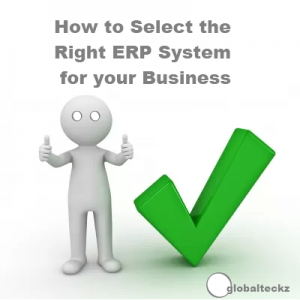How to Select the Right ERP system for your Business – Selecting the right Enterprise Resource Planning (ERP) system is a critical decision that can shape the future of any organization. An effective ERP system serves as the backbone of business operations, integrating various processes and facilitating real-time data flow across departments such as finance, human resources, sales, and supply chain management. This integration not only enhances operational efficiency but also enables informed decision-making, ultimately driving organizational growth and competitiveness. In today’s rapidly evolving business landscape, characterized by digital transformation and increasing market demands, the need for a robust ERP solution has never been more pronounced. Companies are faced with a multitude of options, each boasting unique features and capabilities tailored to different industries and business models. This abundance of choices can make the selection process overwhelming and fraught with challenges.
To navigate this complex landscape effectively, it is essential to take a systematic approach to identify an ERP system that aligns with your specific business requirements. By understanding your operational needs, engaging stakeholders, and evaluating potential solutions, you can make an informed decision that not only meets your current demands but also positions your organization for future success. This article will guide you through the essential steps to select an ERP system tailored to your business needs, ensuring you invest in a solution that maximizes efficiency and supports your strategic objectives.
Understanding ERP Needs
Before diving into the selection process, it’s vital to understand your organization’s specific needs. This begins with a thorough assessment of your current processes, challenges, and future goals.
- Identify Pain Points: Engage stakeholders from different departments to discuss existing inefficiencies. For instance, are you experiencing difficulties in inventory management, customer service, or financial reporting? Document these challenges to create a clear picture of what your ERP system needs to address.
- Define Business Goals: Outline your business objectives. Are you aiming to increase sales, enhance customer satisfaction, or streamline operations? Clearly defined goals will help you identify features that align with your strategic vision.
- Engage Stakeholders: Involve key stakeholders from different functions such as finance, HR, sales, and operations in the needs assessment. Their insights will provide a holistic understanding of what your organization requires from an ERP system.
Evaluating Features
Once you have a clear understanding of your needs, the next step is to evaluate the features offered by different ERP systems.
- Core Functionalities: Identify essential modules that align with your business processes. Common ERP modules include:
- Financial Management: Look for features such as budgeting, forecasting, and compliance reporting to ensure sound financial oversight.
- Human Resource Management (HRM): Assess functionalities like payroll, performance tracking, recruitment, and employee self-service to streamline HR operations.
- Customer Relationship Management (CRM): A robust CRM module should enable effective lead management, customer support, and sales tracking.
- Supply Chain Management: Evaluate capabilities for inventory management, procurement, and logistics to optimize your supply chain.
- Customization Options: Every business is unique, and a rigid system may not address specific needs. Look for ERP solutions that allow customization to tailor workflows and functionalities according to your business requirements.
- User Experience: Consider the usability of the system. A user-friendly interface reduces training time and enhances employee productivity. Request demos or trial versions to evaluate the user experience firsthand.
Scalability and Flexibility
As your business grows, so will its needs. Therefore, it is crucial to select an ERP system that is scalable and flexible.
- Growth Potential: Ensure the ERP system can accommodate future growth. It should be capable of handling increased data volume, users, and transactions without compromising performance.
- Adaptability: Business processes evolve, and your ERP system should be adaptable to changes in operations, market conditions, or regulatory requirements. Look for solutions that can integrate new functionalities or modules as needed.
Integration with Existing Systems
An effective ERP system should seamlessly integrate with your existing software and systems to eliminate data silos and enhance collaboration.
- Compatibility Check: Assess how well the ERP system integrates with your current applications, such as CRM software, e-commerce platforms, or legacy systems. Compatibility ensures a smooth data flow and reduces disruption during implementation.
- API and Third-Party Support: Verify that the ERP system supports standard APIs or integration protocols, allowing for easy connection with third-party applications. This feature is vital for organizations that rely on multiple tools to operate efficiently.
- Data Migration: Consider the complexity of migrating existing data into the new ERP system. Choose a solution that offers tools and support for smooth data migration, minimizing downtime and data loss.
Vendor Support and Training
Selecting the right ERP vendor is as important as choosing the system itself. A supportive vendor can significantly influence the success of your ERP implementation.
- Vendor Reputation: Research potential vendors thoroughly. Look for reviews, case studies, and testimonials from other businesses in your industry. A reputable vendor will have a proven track record of successful implementations and satisfied clients.
- Implementation Support: Inquire about the vendor’s implementation process. A reliable vendor should offer dedicated support during the setup phase, ensuring that your team can effectively utilize the new system.
- Training Resources: Comprehensive training is essential for maximizing the benefits of your ERP system. Choose a vendor that provides training resources such as user manuals, online tutorials, and on-site training sessions to help employees become proficient in using the system.
- Ongoing Support: After implementation, ensure the vendor offers ongoing technical support. This includes troubleshooting, updates, and maintenance services. Reliable vendor support will ensure that your ERP system continues to operate smoothly.
Cost Considerations
Understanding the total cost of ownership (TCO) is essential when selecting an ERP system. This includes not only the initial purchase price but also ongoing costs.
- Licensing Fees: Determine the licensing model of the ERP system—whether it’s subscription-based (SaaS) or a one-time purchase. Understand what is included in the licensing fees, such as updates, support, and additional modules.
- Implementation Costs: Consider the costs associated with implementing the system, including consulting fees, data migration, and customization. These costs can vary significantly depending on the complexity of your business processes.
- Maintenance and Upgrades: Factor in ongoing maintenance costs, including regular updates, support fees, and potential upgrade costs as your business evolves.
- Return on Investment (ROI): Assess the potential ROI of the ERP system. Calculate the expected efficiency gains, cost savings, and revenue growth that the system can deliver to justify the investment.
Conducting a Thorough Evaluation
Once you’ve gathered information on various ERP solutions, it’s crucial to conduct a thorough evaluation.
- Create a Shortlist: Based on your needs, features, scalability, integration capabilities, and vendor reputation, create a shortlist of potential ERP systems that meet your criteria.
- Request Demos: Schedule demonstrations with shortlisted vendors to see the systems in action. Involve key stakeholders in these demos to gather their feedback on usability and functionality.
- Compare Options: Use a comparison matrix to evaluate each ERP solution against your defined criteria. This visual representation will help you identify strengths and weaknesses, guiding your final decision.
- Seek References: Request references from vendors to speak with other organizations that have implemented their ERP solutions. Learning from their experiences can provide valuable insights into the system’s performance and vendor support.
Making the Final Decision
After completing your evaluation process, it’s time to make an informed decision.
- Engage Stakeholders: Present your findings to key stakeholders and gather their input. A collaborative decision-making process fosters buy-in and ensures that everyone is aligned on the chosen solution.
- Negotiate Terms: Once you’ve selected a vendor, negotiate terms and conditions. This includes pricing, support, implementation timelines, and any customization requirements.
- Plan for Implementation: Develop a comprehensive implementation plan that outlines timelines, responsibilities, and milestones. Involve stakeholders to ensure smooth execution.
Conclusion
Selecting the right ERP system is a significant undertaking that can profoundly impact your organization’s efficiency and growth. By understanding your unique needs, evaluating key features, and engaging stakeholders, you can make an informed decision that aligns with your business goals. The right ERP solution will not only streamline your operations but also empower you to adapt to changing market conditions and drive long-term success. Investing the time and resources into this selection process will pay dividends as you enhance operational efficiency and ultimately achieve your strategic objectives.
Read our related article
Read the complete article from our new blog








To select a right ERP software for your business, the only things required are strong knowledge about your company, needs of business, business hierarchy, business goals and employees. Just combine these factors and you can easily zero upon the best software for your business.